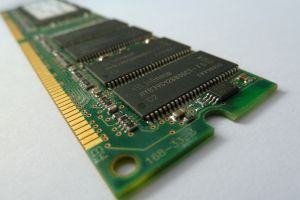 Apple puts M3 chips into its new iMac and MacBook Pro
Apple puts M3 chips into its new iMac and MacBook Pro
On October 30, 2023, Apple unveiled its M3 family of chips. The company calls them “the most advanced chips for a personal computer,” and, if we speak about a mass-produced silicon that actually powers hardware, that may be true. Although, it should be noted here that IBM presented its 2-nm chip, an experimental thing so far, back in 2021. Let’s take a closer look at the said Apple chips, see what the first products on the market to get them on board are, and consider the prospects of further silicon miniaturization.
What are M3 chips by Apple?
![]() Central processing unit. Image by rawpixel.com from Freepik
Central processing unit. Image by rawpixel.com from Freepik
As the name of the new Apple’s family of chips suggests, they are built around a 3-nanometer process, which is certainly an advancement, if not a breakthrough. For comparison, most chips in the world are 10-nanometer (as of this writing), with 7-nm and 5-nm processes emerging in marketed products.
The family includes M3, M3 Pro, and M3 Max; Apple claims they have “next-generation GPU architecture and deliver dramatic performance improvements, a faster CPU and Neural Engine, and support for more unified memory.” Expressed in numbers, the promise includes:
– hardware-accelerated ray tracing and mesh shading;
– rendering speeds up to 2.5x faster;
– CPU performance cores and efficiency cores 30% and 50% faster;
– and Neural Engine 60% faster.
Apple compares M3 to its earlier M1 silicon family. Benchmarked with M2, M3 would probably not look like that much of a boost.
Given the current trends, it makes sense to separately mention the support for 128GB of memory in a laptop. While an overkill for most of us, this is a much wanted advancement for those involved in AI development, enabling them to work with larger models while not attached to a powerful desktop.
Apple’s M3 silicon in its laptops and desktops
The same day, Apple published two more press releases announcing its new iMac and MacBook Pro with M3 chips on board.
The latest iMac, the all-in-one computer, has a 24‑inch Retina display with 11.3 million pixels and over a billion colors, a beauty to look at. On average twice as good as the popular previous models performance-wise, the Apple’s desktop has best-in-class camera, speakers, and mics. The default OS there is macOS Sonoma, which we covered in this piece. All in all, if you were looking to upgrade your Mac hardware, this is a good option, available for ordering beginning November 7, 2023.
Apple laptops, 14-inch and 16-inch MacBook Pro models with M3 Pro and M3 Max chips, respectively, now have what the company calls “a gorgeous new space black finish.” It doesn’t affect the performance, but there is no need for that, since the new silicon powering the rather expensive laptops (a starter 14-inch MacBook Pro with M3 will set you back US$1,599) delivers the boost as described above. In addition, these MacBooks have “a brilliant Liquid Retina XDR display with 20 percent brighter SDR content,” six speakers for immersive sound, and up to 22 hours of battery life. The latter, even given Apple's positive track record in this domain, obviously pertains to scenarios when the laptop is not used at all.
Chip designs: what’s ahead?
 What will the next computer chip be like? Image by onlyyouqj from Freepik
What will the next computer chip be like? Image by onlyyouqj from Freepik
You have most likely heard of Moore's Law, an observation/prediction that suggests the doubling of the maximum possible number of transistors on a silicon chip every 2 years. Introduced in 1965 by Gordon E. Moore, Intel’s co-founder, this Law is now becoming obsolete: we have basically reached the point where further miniaturization requires breakthroughs, and these take time.
IBM, one of the leading chip designers in the world, is optimistic, though. They have already presented a 2-nm silicon (that’s up to 50 billion transistors on a chip the size of a fingernail), and their piece “The path to 1 nanometer chips and beyond” gives the impression that they do know what to do. So we are safe for the next couple of decades in terms of computing power growth, it would seem. What happens after that? Likely, a couple of years of tweaking and optimizing the then-existing platforms, and then – a switch to something radically different, with the alternatives investigated now including gallium nitride (GaN), carbon nanotube (CNT), graphene, and organic electronics.



